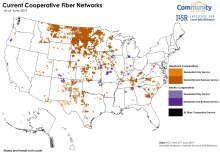Anti-Competition Bill Awaiting Final Vote in Louisiana House Would Limit Expansion of Electric Co-op Broadband
A bill close to being passed by the Louisiana State Legislature would allow electric cooperatives to expand Internet access but only in parts of the state without broadband currently. This limitation in the bill, SB 406, will keep Internet choice out of reach for many rural Lousianans and could even hamstring co-ops’ efforts to expand broadband to unserved areas.
“The language would restrict us from competing with others in the broadband market but would not stop them from cherry picking (customers) from cooperatives who choose to get in the broadband market,” Jeff Arnold, CEO of the Association of Louisiana Electric Cooperatives, explained to the Advocate.
As introduced, SB 406 explicitly authorized the state’s electric cooperatives to deploy broadband networks to connect their members using their existing electrical systems and easements. But, Senate amendments added to the bill later narrowed electric co-ops’ authority only to unserved areas, which include less than 13 percent of the state’s residents, according to the Federal Communications Commission (FCC). The Louisiana Senate voted unanimously in favor of the bill last week, and it’s currently in the House of Representatives awaiting a final reading and vote.
Louisiana Lawmakers Restrict Co-op Connectivity
While Louisiana state law does not prohibit electric cooperatives from offering Internet access, it is not expressly authorized, and one co-op that attempted to enter the business was held up by the state’s Public Service Commission, reported the Advocate. To fix that, SB 406 would specifically allow electric co-ops and their partners to provide broadband access and would permit them to use existing electrical easements and infrastructure to expand service.




